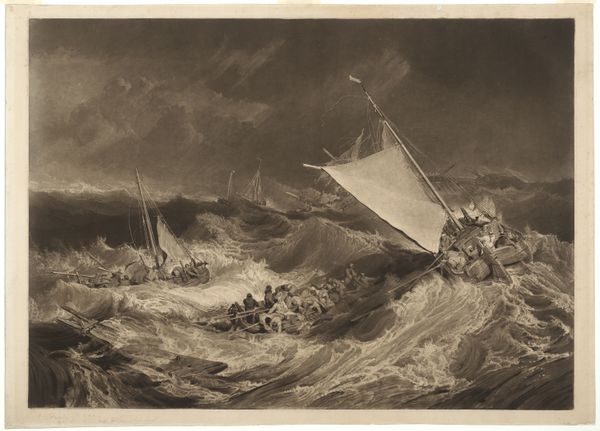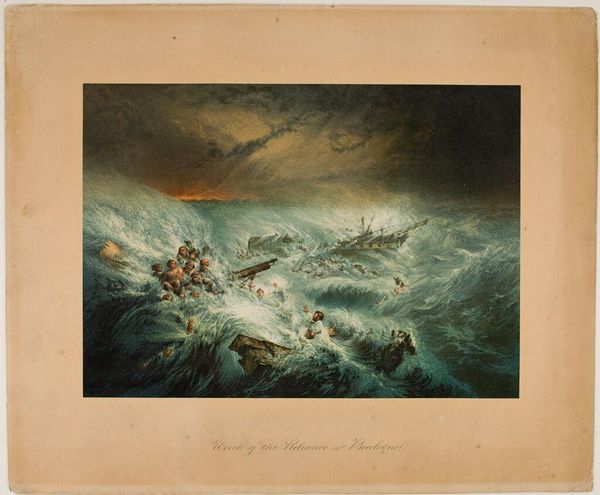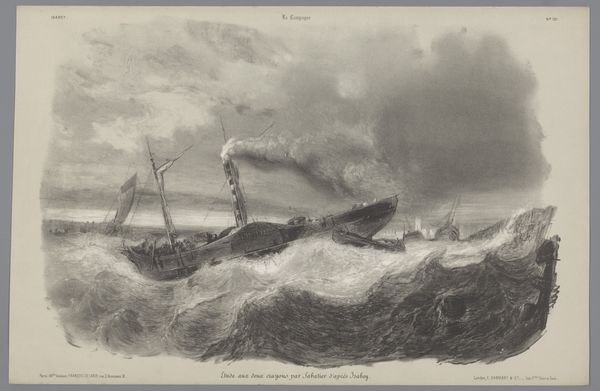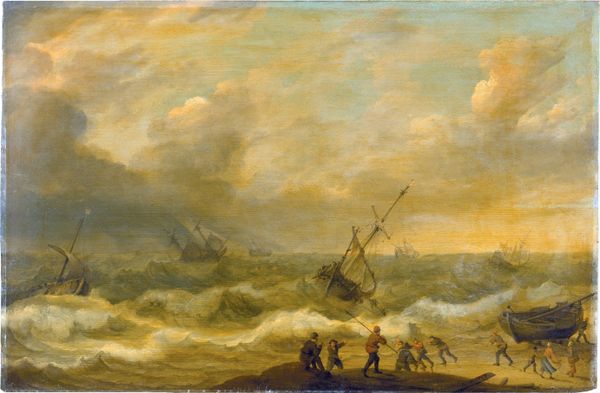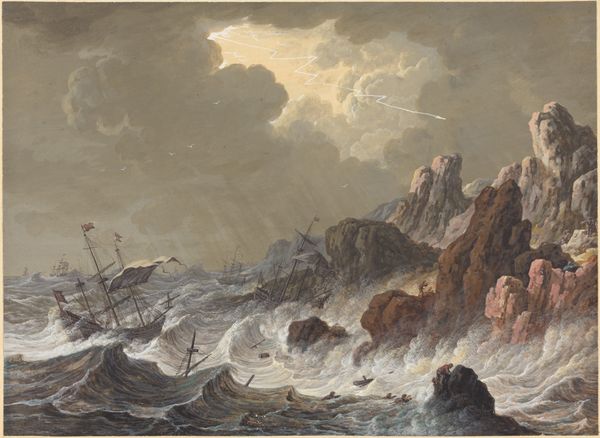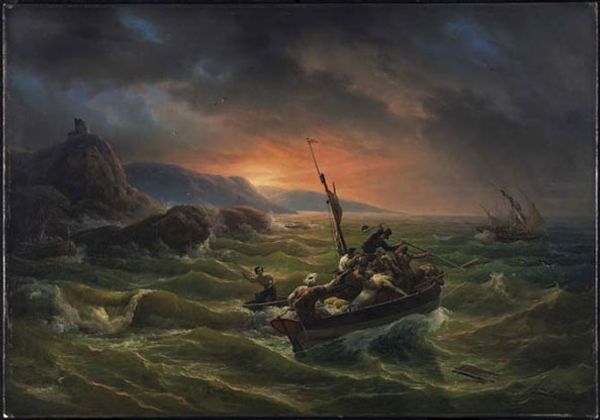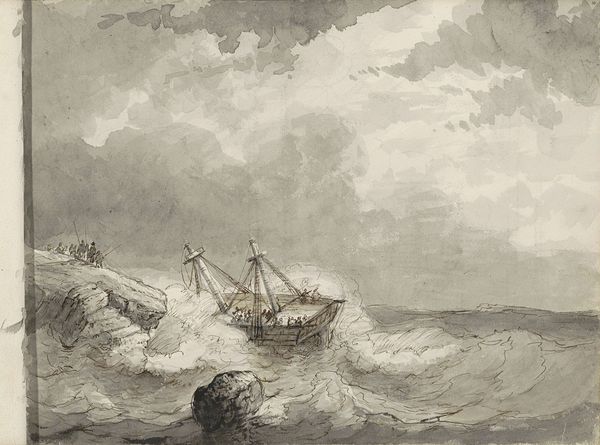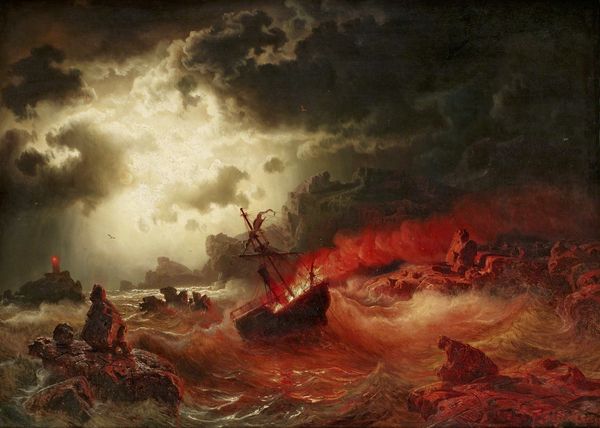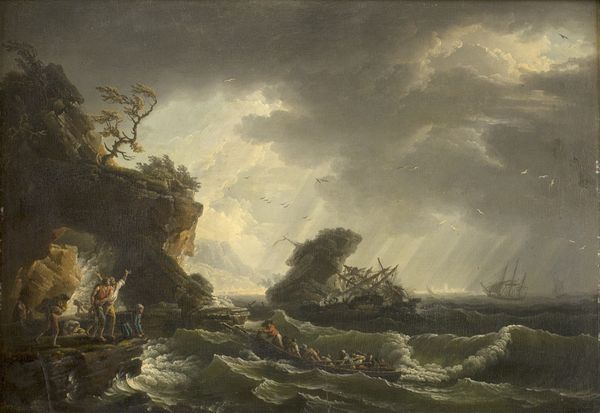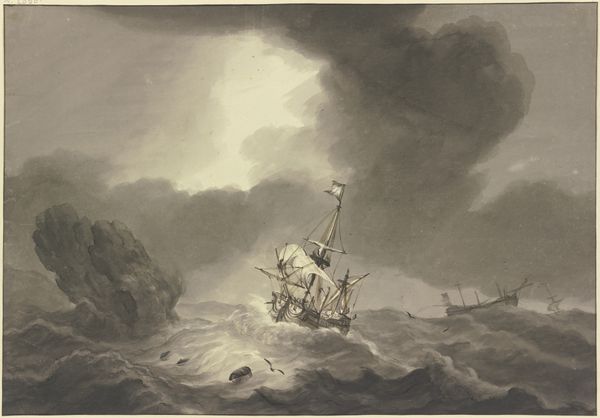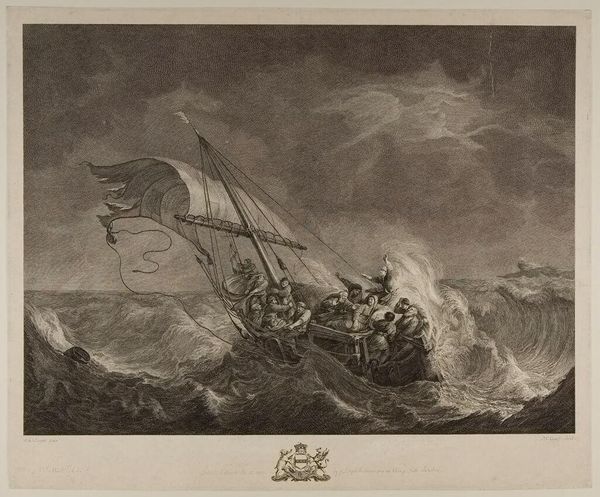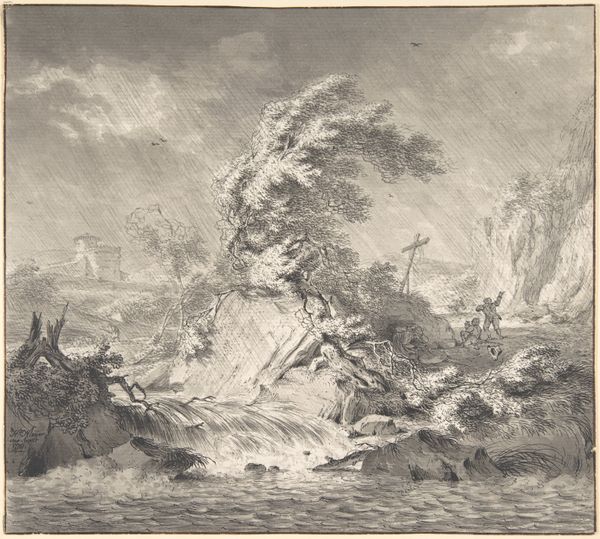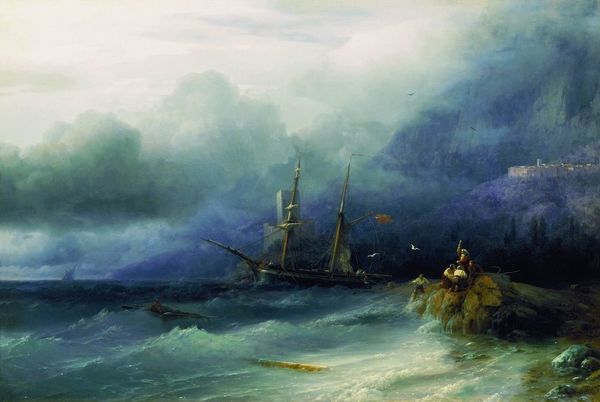
drawing, print, paper, engraving
#
drawing
#
narrative-art
#
fantasy art
# print
#
landscape
#
paper
#
romanticism
#
engraving
Dimensions: 300 × 415 mm (image); 305 × 420 mm (sheet)
Copyright: Public Domain
Curator: This intense image is "The Wreck of the Reliance (November 12, 1842)," a print created by George Baxter around 1843, currently residing here at the Art Institute of Chicago. Editor: Visually, the drama is undeniable. The composition is incredibly active, almost overwhelmingly so, with a roiling sea dominating the scene. The ship, the bodies, everything seems tossed around at random. Curator: The piece captures a very specific maritime disaster, indeed. These sorts of shipwrecks often made sensational headlines, didn’t they? News spread quickly and artists like Baxter capitalized on the public fascination. Shipwrecks spoke to a certain Victorian anxiety regarding technological progress and its relationship to natural forces. Editor: I'm struck by how Baxter renders the water—the frothy, almost sculptural quality of the waves. The contrast of light and dark amplifies the turbulence, creating a very believable sense of chaos and power. And it seems so meticulously detailed for a print! Curator: Indeed! Baxter’s use of color printing was quite innovative for his time. But getting back to the social dimension: consider the role such imagery played. This print turns tragedy into commodity, transforming a horrific event into a consumable image for a distanced audience. Were these images meant to inspire reflection on society’s place in nature, or were they merely designed for commercial gain? Editor: But that drama also comes, I think, from a brilliant manipulation of light and dark. The sliver of golden sunset almost taunts the chaos below it, highlighting the precarity of the survivors struggling in the churning water. Curator: True. So, it's worth considering how the aesthetics of Romanticism—specifically its fascination with the sublime power of nature—could be, in the end, put to the service of industry, by depicting such an overwhelming display of forces in these popular prints. Editor: Yes, it does offer plenty to ponder in terms of technical execution. From its vibrant, dramatic colors to its composition focused on drawing the eye through the storm, there's a mastery of form and technique. Curator: And in its place within broader Victorian society and anxieties about man versus nature, industrial advancement, and our morbid fascination with disasters, this scene offers us far more to unpack about ourselves.
Comments
No comments
Be the first to comment and join the conversation on the ultimate creative platform.
